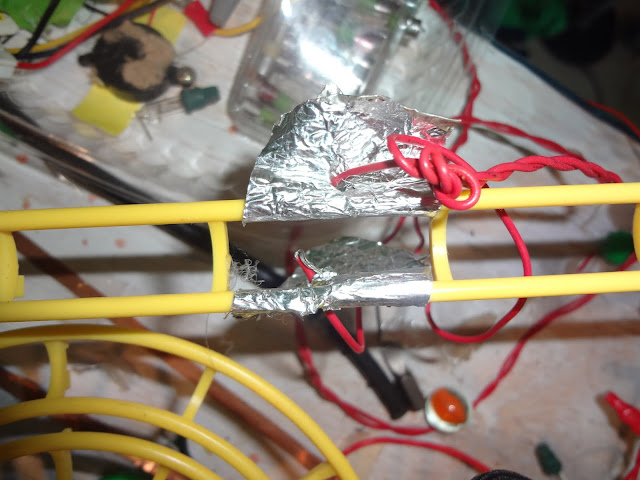The yellow funnels and some of the other parts are from a previous version of the marble maze that I had at the 2013 Austin Mini Maker Faire. The previous version had two of these vertical walls made of thin plywood, back to back like an easel, set on top of a table. The orange striped tubing is part of a toy from the dollar store that whistles when you swing it around. The blue tube is from a water squirter toy. The grey tubing was originally part of Grandpa's CPAP machine. The yellow brackets are part of my erector set toy. The light blue tubing and the clear channels are from an actual marble maze toy.
Marbles can go down through two different paths, and then join back up at the clear channel right before the chime. When any marble hits the chime, the LEDs on the left light up. Then the marbles continue down through the lower yellow funnel, and hit the bell.

































